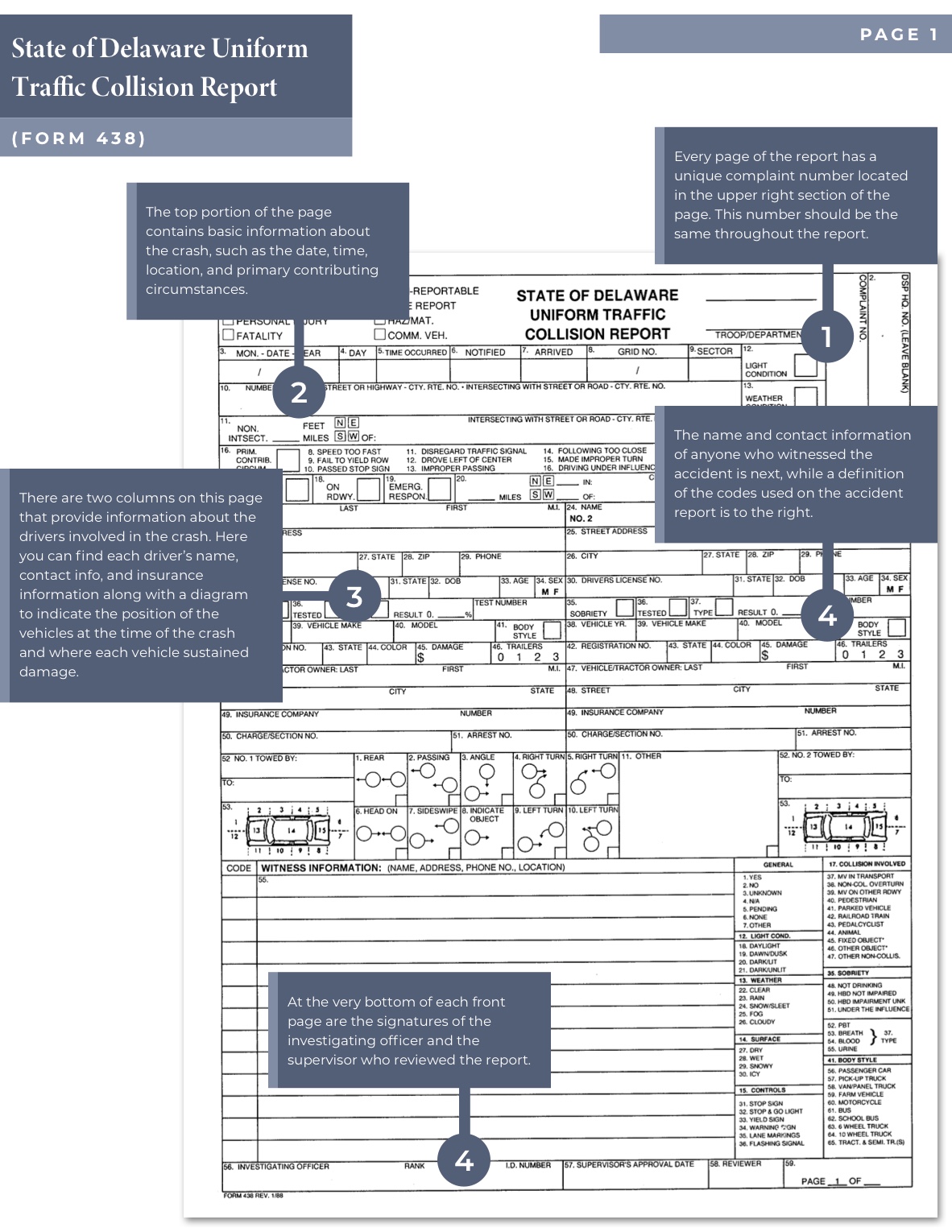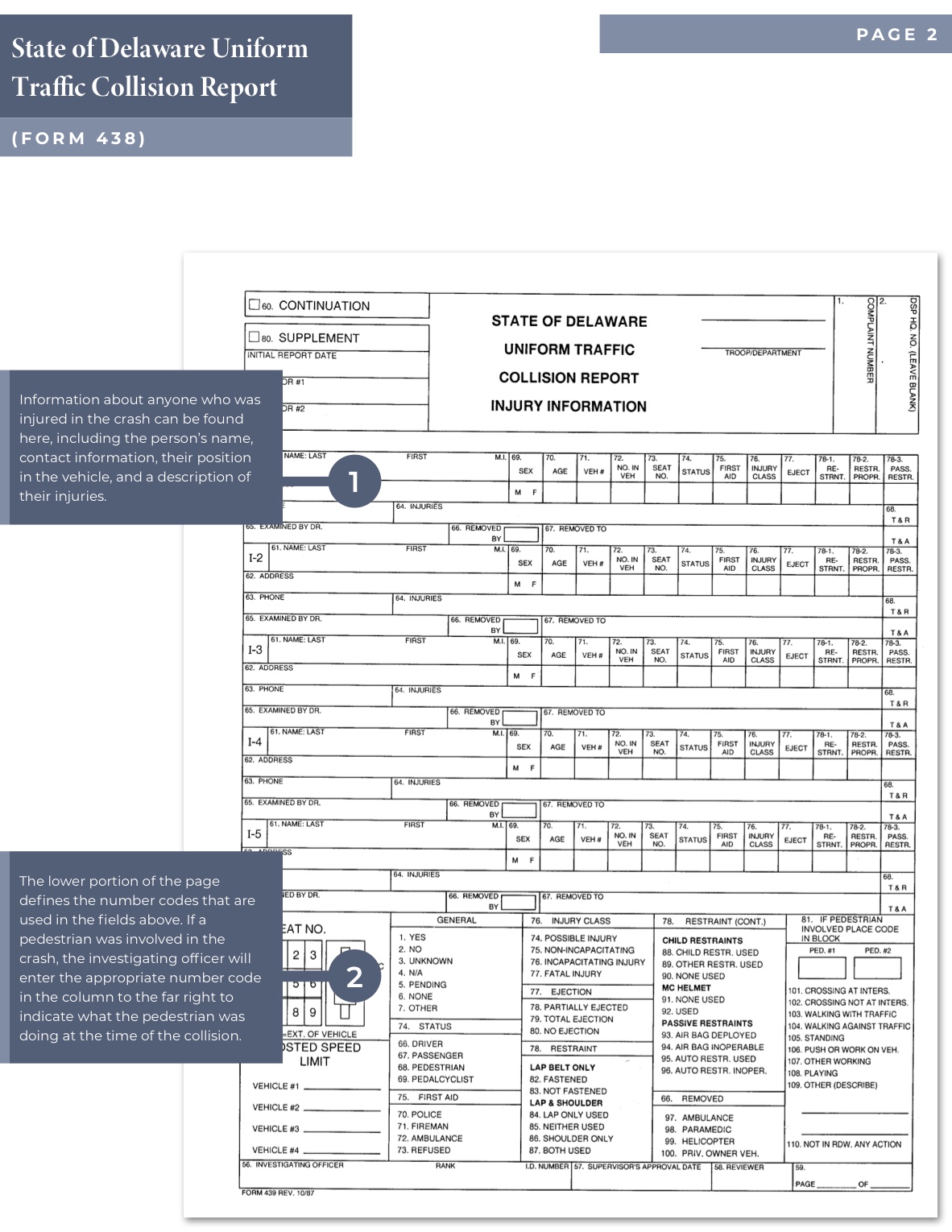In a divorce, the laws of equitable distribution distinguish marital property from separate property. Technically, only marital property, that is, proper...
Any car accident in Delaware that involves an impaired driver or results in injury, death, or property damage to an apparent extent of at least $500 must be reported to police immediately. After police respond to the scene, the investigating officer will complete an accident report, officially called the State of Delaware Uniform Traffic Collision Report, or Form 438. This official document contains many important details about your crash and is a critical piece of evidence when pursuing a personal injury claim.
When it comes to car accidents, Delaware follows a no-fault system. That means instead of pursuing compensation for your damages from the at-fault driver’s insurance company, you turn to your own insurance policy first. If your accident-related expenses exceed your insurance policy limits or your injuries are severe enough to meet certain thresholds, you may step outside the no-fault system to pursue a claim for compensation from the at-fault party.
Insurance companies use the official police accident report to determine fault for an accident. Under Delaware’s modified comparative negligence laws, you may not recover compensation from another party if you are found to be more than 50% at-fault for the accident. Any compensation you are eligible to recover will also be reduced by the percentage of fault you’re assigned. As such, the details in your police accident report can have a direct impact on your case.
You may request a copy of your Delaware Uniform Traffic Collision Report from the Delaware State Police Traffic Unit. If you need help getting a copy of your accident report or you find the facts just don’t match up with the way things really happened, contact a Delaware car accident lawyer near you to protect your rights. An attorney can take steps to set the record straight and have the accident report amended to reflect the true story of your crash.
State of Delaware Uniform Traffic Collision Report (Form 438)
https://actar.org/pdf/de_rep1.pdf

Page 1 (front)
Every page of the report has a unique complaint number located in the upper right section of the page. This number should be the same throughout the report.
Click here to download a printable PDF of How to Read Your Delaware Accident Report.
The top portion of the page contains basic information about the crash, such as the date, time, location, and primary contributing circumstances.
There are two columns on this page that provide information about the drivers involved in the crash. Here you can find each driver’s name, contact info, and insurance information along with a diagram to indicate the position of the vehicles at the time of the crash and where each vehicle sustained damage.
The name and contact information of anyone who witnessed the accident is next, while a definition of the codes used on the accident report is to the right.
At the very bottom of each front page are the signatures of the investigating officer and the supervisor who reviewed the report.

Page 1 (back)
If the collision involved more than two drivers, details about the additional drivers can be found here. There is also a space for the investigating officer to sketch damage to a motorcycle or trailer that’s involved in the crash.
Most of the space on this page is for the investigating officer to draw a diagram of the crash. This diagram is a visual interpretation of how the investigating officer thinks the accident occurred and should be consistent with the information documented throughout the report.

Page 2
Information about anyone who was injured in the crash can be found here, including the person’s name, contact information, their position in the vehicle, and a description of their injuries.
The lower portion of the page defines the number codes that are used in the fields above. If a pedestrian was involved in the crash, the investigating officer will enter the appropriate number code in the column to the far right to indicate what the pedestrian was doing at the time of the collision.

Page 3
This page is used as a continuation or supplement if the investigating officer needs more room to document the name and contact information of additional eyewitnesses or anyone else involved in the crash.





